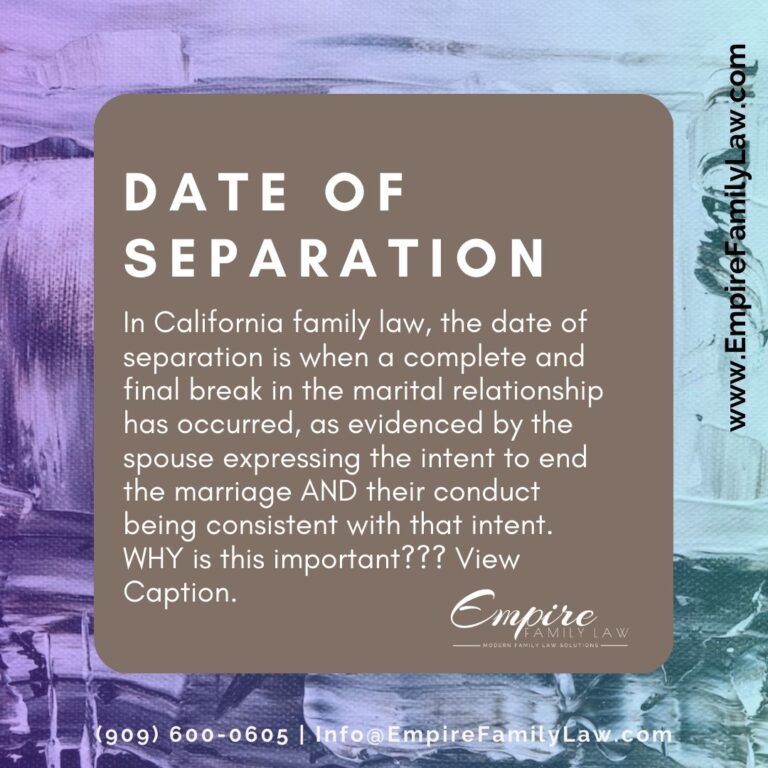
Child Abduction & Change in Custody Orders
ABSCONDED WITH A MINOR CHILD & INTENTIONALLY FRUSTRATING THE OTHER PARENT’S RIGHTS TO VISITATION – ESTABLISHES A SUBSTANTIAL CHANGE IN CIRCUMSTANCES AND SUPPORTS A MODIFICATION IN CUSTODY
Generally, to modify a legal or physical custody order, a substantial change in circumstances must be shown, since the last order was made. (See Marriage of Carney (1979) 24 C3d 725, 730; Marriage of McLoren (1988) 202 CA3d 108, 111.) There are two situations, however, in which a change of circumstances is not required.
First, a change of circumstances is not required when the requested change is less than a change in legal custody – such as one parent requesting sole authority over a child’s orthodontic care (Marriage of Furie (2017) 16 CA5th 816, 827) or seeking to modify the timeshare without altering the existing custodial arrangement (Marriage of Lucio (2008) 161 CA4th 1068, 1077).
Second, a change of circumstances isn’t required when the order being modified is a temporary or pendente lite order (Marriage of Lewin (1986) 186 CA3d 1482, 1487) — or an initial order rather than a modification (Burchard v. Garay (1986) 42 Cal. 3d 531). In cases where one parent has had custody for a significant period by agreement without a court order, the noncustodial parent seeking a court order for a change in custody must persuade the court that the change is in the child’s best interest, without first establishing a substantial change in circumstances (Id. at 536).
Likewise, if the custody order is a stipulated order that does not clearly indicate finality, such as a temporary stipulated custody arrangement, the decision on whether to grant the request is based on the best interest of the child, as opposed to a substantial change in circumstances. Quoting Burchard, the court in Montenegro v. Diaz explains:
[T]he changed-circumstance rule is not a different test, devised to supplant the statutory test [referencing the best interests standard], but an adjunct to the best-interest test. It provides, in essence, that once it has been established that a particular custodial arrangement is in the best interests of the child, the court need not reexamine that question. Instead, it should preserve the established mode of custody unless some significant change in circumstances indicates that a different arrangement would be in the child’s best interest. The rule thus fosters the dual goals of judicial economy and protecting stable custody arrangements.
(Montenegro v. Diaz (2001) 26 Cal.4th 249, 256.)
The California Supreme Court reiterated the Burchard holding in In Re Marriage of Burgess, stating: “[A]fter a judicial custody determination, the noncustodial parent seeking to alter the order for legal and physical custody can do so only on a showing that there has been a substantial change of circumstances so affecting the minor child that modification is essential to the child’s welfare.” (In Re Marriage of Burgess (1996) 13 Cal.4th 25, 29.)
Therefore, when seeking to modify a custody order, it is necessary to first determine if the order to be modified is final. If it is, then a substantial change in circumstances must be demonstrated. If it is not final, the focus shifts to demonstrating what is in the best interest of the child.
Intentional frustration of the noncustodial parent’s right to physical custody can be grounds for a change in circumstances. (In re Marriage of Ciganovich (1976) 61 Cal. App. 3d 289.) Therefore, conduct by a custodial parent designed to frustrate visitation and communication may be grounds for changing custody. (Speelman v. Superior Court (1983) 152 Cal.App.3d 124, 132.). The court should also bear in mind that a custodial parent’s attempt to frustrate the court’s order has a bearing upon the fitness of that parent. (Ciganovich, 61 Cal.App.3d at 294.) “Even if the custodial parent is otherwise ‘fit,’ such bad faith conduct may be relevant to a determination of what permanent custody arrangement is in the minor children’s best interest… In making an order granting custody to either parent, the court shall consider, among other factors, which parent is more likely to allow the child frequent and continuing contact with the noncustodial parent…” (In re Marriage of Burgess, 13 Cal.4th at 36.)
IT IS POSSIBLE TO REVERSE CUSTODY ORDERS, GRANTING FULL CUSTODY TO AN ALIENATED PARENT, WHILE LIMITING AN ALIENATING PARENT’S CONTACT WITH THE CHILD
Family Code §3020(a) states, in determining the best interest of a minor child when making orders regarding physical custody, legal custody, or visitation of the child, the court’s primary concern is ensuring the child’s health, safety, and welfare. Additionally, Fam C §3020(b) emphasizes the importance of maintaining frequent and continuing contact with both parents. In making a custody order, Fam C §3040(1) further states, “[i]n making an order granting custody to either parent, the court shall consider, among other factors, which parent is more likely to allow the child frequent and continuing contact with the noncustodial parent[.]”
In the case of Wood v. Wood, for instance, the court approved the transfer of physical custody from mother to father because the evidence showed that the mother was trying to sever the children’s relationship with their father (i.e., obstructing the children from visiting or speaking with their father). Subsequently, the court found that the father was more likely than the mother to foster interaction between the children and the other parent, thus promoting the development of a good relationship between the children and both parents. (In re Marriage of Wood, 141 Cal.App.3d 671.) Similarly, in Moffat v Moffat (1980) 27 Cal.3d 645, 652 and In re Marriage of Ciganovich (1976) 61 Cal.App.3d 289, 293-294, the courts held “frustration of visitation rights by the custodial parent is a proper ground for transfer of custody to the formerly noncustodial parent.” (Id. at 682.) Moreover, in Catherine D. v. Dennis B, the court upheld the transfer of primary physical custody from mother to father due to the mother’s repeated efforts to undermine the father’s visitation rights and negatively influence their child against the father (i.e., via badmouthing the father as a parent and utilizing “brainwashing” tactic). (Catherine D. v. Dennis B. (1990) 269 Cal. Rptr. 547.)
When one parent intentionally undermines, interferes with, denies, or disregards the other parent’s relationship with the child, it can lead to parental alienation. Alienation means isolating one thing from another. Accordingly, in respect to parental alienation, it’s one parent’s conduct (i.e., interfering with visitation) and/or use of disparaging words, often planned and/or malicious, to isolate a child from the other parent — causing division, estrangement, and potential hostility between the child and the victimized parent.
The California Welfare and Institutions Code recognizes the emotional harm caused by parental alienation. Section 300(c) empowers family courts to protect children who are “at substantial risk of suffering serious emotional damage, evidenced by severe anxiety, depression, withdrawal, or untoward aggressive behavior toward self or others, as a result of the conduct of the parent or guardian.”
Therefore, pursuant to Fam C §3040, courts will award more custody time to the parent actively fostering a positive relationship between the child and the other parent, while reducing custody time for the parent engaging in alienating behaviors. As held in the mentioned cases, it is also possible to reverse custody orders, granting full custody to the alienated parent and limiting the alienating parent’s contact with the child.
CHILD ABDUCTION – A FEDERAL OFFENSE, PREVENTATIVE MEASURES, AND FINANCIAL COMPENSATION
Under Fam C §3048 (b)(1):
In cases in which the court becomes aware of facts which may indicate that there is a risk of abduction of a child, the court shall, either on its own motion or at the request of a party, determine whether measures are needed to prevent the abduction of the child by one parent. To make that determination, the court shall consider the risk of abduction of the child, obstacles to location, recovery, and return if the child is abducted, and potential harm to the child if he or she is abducted. To determine whether there is a risk of abduction, the court shall consider the following factors: (A) Whether a party has previously taken, enticed away, kept, withheld, or concealed a child in violation of the right of custody or of visitation of a person. (B) Whether a party has previously threatened to take, entice away, keep, withhold, or conceal a child in violation of the right of custody or of visitation of a person. (C) Whether a party lacks strong ties to this state. (D) Whether a party has strong familial, emotional, or cultural ties to another state or country, including foreign citizenship. This factor shall be considered only if evidence exists in support of another factor specified in this section. (E) Whether a party has no financial reason to stay in this state, including whether the party is unemployed, is able to work anywhere, or is financially independent. (F) Whether a party has engaged in planning activities that would facilitate the removal of a child from the state, including quitting a job, selling his or her primary residence, terminating a lease, closing a bank account, liquidating other assets, hiding or destroying documents, applying for a passport, applying to obtain a birth certificate or school or medical records, or purchasing airplane or other travel tickets, with consideration given to whether a party is carrying out a safety plan to flee from domestic violence. (G) Whether a party has a history of a lack of parental cooperation or child abuse, or there is substantiated evidence that a party has perpetrated domestic violence. (H) Whether a party has a criminal record.
Furthermore, under Fam C §3048 (b)(2), if the court makes a finding that there is a need for preventative measures after considering the factors listed in paragraph (1), the court shall consider taking measures to prevent the abduction of the child.
Moreover, Fam C §3028 provides that a court may order financial compensation when a parent has been thwarted by the other parent when attempting to exercise custody or visitation rights contemplated by a custody or visitation order. Under, Fam C §3028, “at least three occurrences of the thwarting of efforts to exercise custody or visitation rights within the six months before filing of the motion or order” must be demonstrated.
Furthermore, the International Parental Kidnapping Crime Act (IPKCA), 18 U.S.C. 1204, makes it a federal offense to remove a child from the United States or to retain a child (who has been in the United States) outside the United States with intent to obstruct the exercise of parental rights (custody or visitation).
To learn more, please contact our office today.




